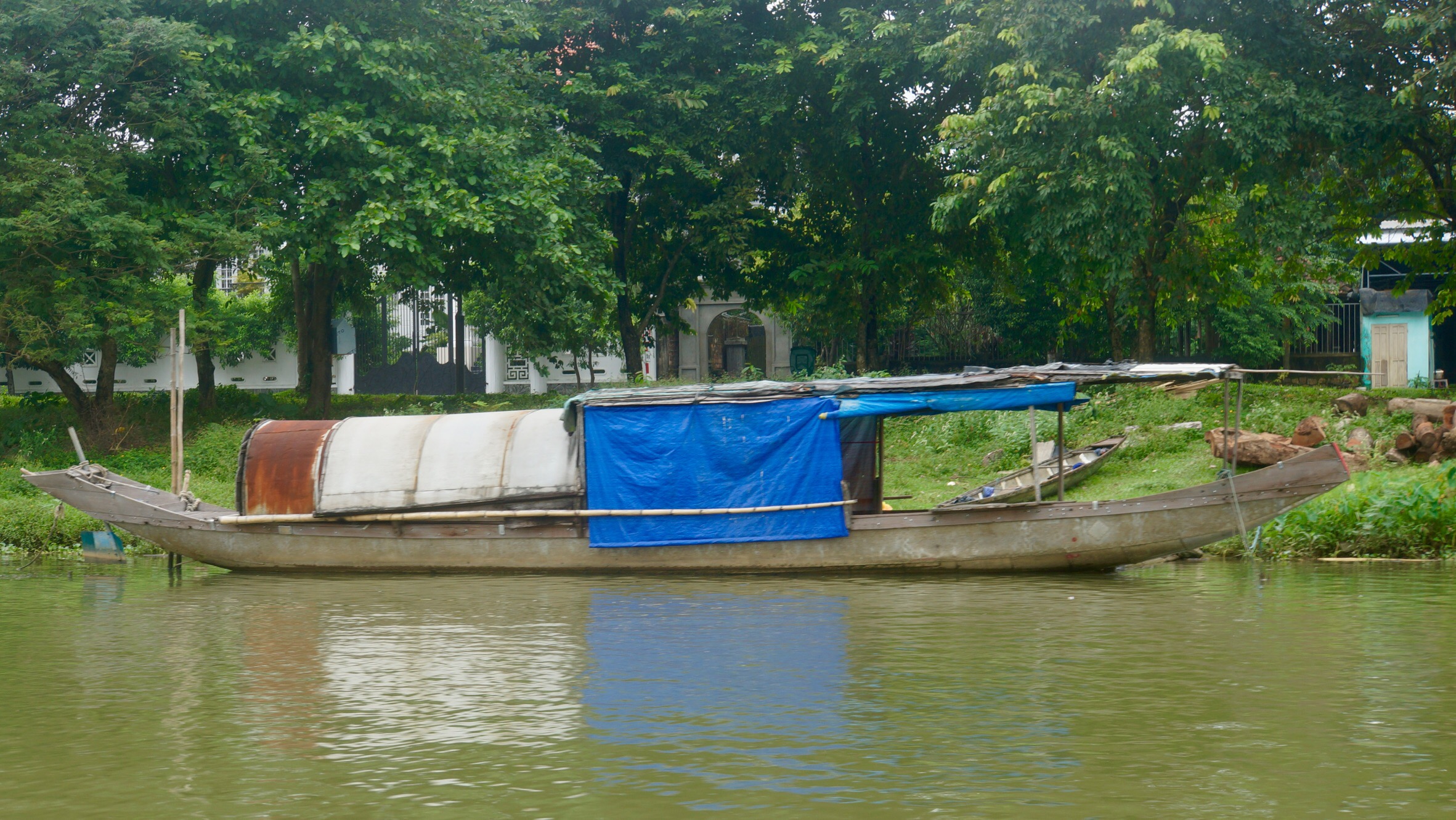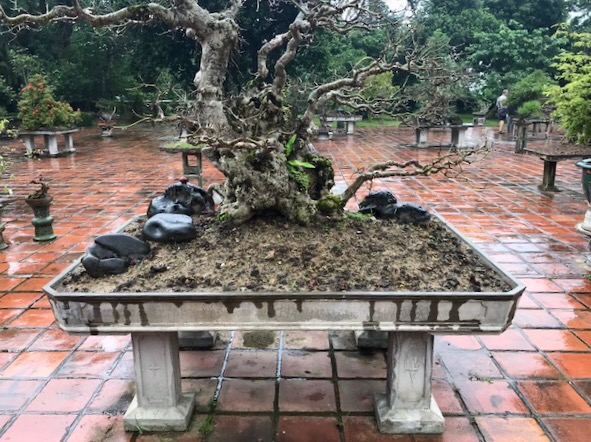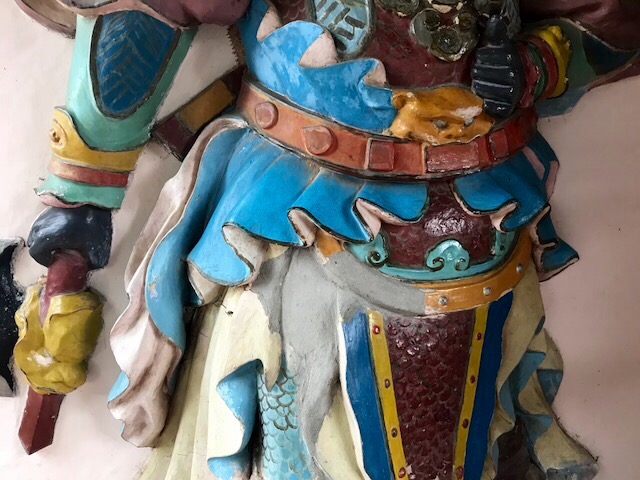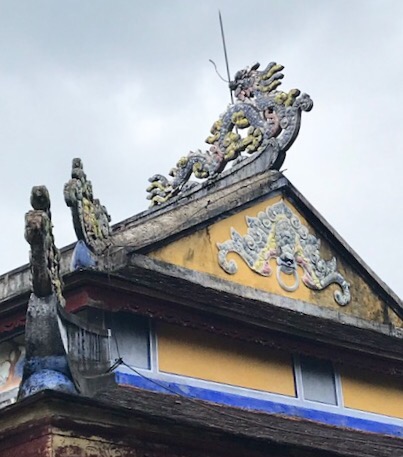October 26. After breakfast in the hotel, we take a morning boat cruise (notice on boat says, “Explosives, flammable materials, radioactive materials and cattle are not allowed to bring with visitors in boat.”) on the Perfume River 



 to visit the Thien Mu Pagoda, which was only moderately interesting.
to visit the Thien Mu Pagoda, which was only moderately interesting.

 We were then then driven to the beautiful grounds that included a temple, bonsai garden, theater and mausoleum of the romantic poet/Emperor Tu Duc, which we toured in rain and sunshine. We “learned” a great deal of history, a good portion of which I have, unfortunately, forgotten already.
We were then then driven to the beautiful grounds that included a temple, bonsai garden, theater and mausoleum of the romantic poet/Emperor Tu Duc, which we toured in rain and sunshine. We “learned” a great deal of history, a good portion of which I have, unfortunately, forgotten already.










 In the afternoon, we proceed to visit the Imperial Citadel. The spectacular and expansive Citadel (which was built in accordance to strict principles of geomancy) houses a series of palaces, ornate halls, libraries, residences and an ornate theater.
In the afternoon, we proceed to visit the Imperial Citadel. The spectacular and expansive Citadel (which was built in accordance to strict principles of geomancy) houses a series of palaces, ornate halls, libraries, residences and an ornate theater. 







 We meet Mr Phuc, a mid-forty year old, soft spoken master of Hue Dynasty History, who works in conservation of historical sites for the government. Mr. Phuc talks with us and answers our questions about the Citadel, and Hue history and culture. The Citadel was the site of fierce battles during the Tet Offensive in 1968.
We meet Mr Phuc, a mid-forty year old, soft spoken master of Hue Dynasty History, who works in conservation of historical sites for the government. Mr. Phuc talks with us and answers our questions about the Citadel, and Hue history and culture. The Citadel was the site of fierce battles during the Tet Offensive in 1968.
We decide to pass on seeing the Dong Ba Market, since we’re about marketed-out for right now. Instead, we return to the hotel, rest and meet Chet and Nancy for a drink in the lobby. As they were tired, Carol and I went out alone to an excellent French-Vietnamese restaurant called Les Jardins De La Carambole that was recommended by Van. The restaurant had the feel of a New Orleans restaurant, and we enjoyed our dinner very much. Food prices in Vietnam are very modest (except at The Four Seasons). Dinner cost us $35, including tip and taxis there and back added $5 to the evening’s cost.

I’m enjoying the photos, especially the ones of the Vietnamese people.